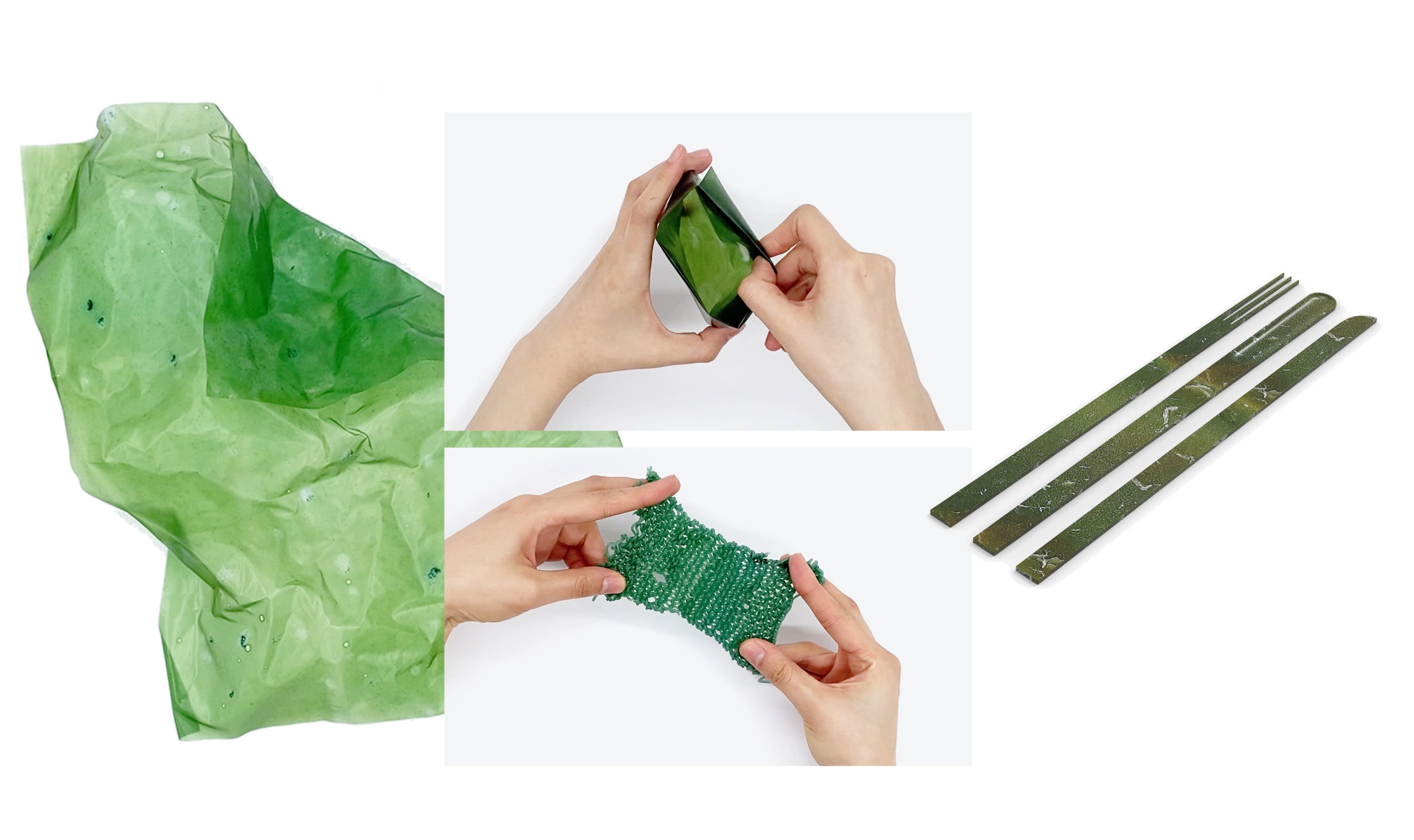In 10 Years, Aircraft Cabins Could Be Filled With Algae-Based Materials
Share

Sugarcane and corn are perhaps the most popular bio-based materials, but their reliance on synthetic fertilizers and arable land have led scientists, manufacturers and now even textile students to consider the use of other microorganisms instead. Among them is algae, vaunted for being zero-waste and biodegradable, having a short cultivation time – up to 12 times faster than plants grown in soil – and a natural ability to filter out carbon dioxide in the process.
Every year, PriestmanGoode challenges students enrolled in the MA Textiles course at London’s Royal College of Art to consider an industry brief, with the winner securing an internship at the studio on the CMF and visualization teams. Tasked with developing a sustainable new luxury aesthetic for transport environments in 2030, the winner of this year’s brief was Yanjie Zhang, whose Algae project displayed the versatility of the sea green as a raw material for cabin amenities, tableware and other fixtures.

Combining sodium alginate and alginate fibre, Yanjie transformed the materials from powder to solid gel and then into threads for weaving a variety of products with different textures: an ultra-absorbent tissue, a wrinkle-free pillowcase, sturdy garbage bags, solid cutlery, a flexible seatback storage pocket and a soft-touch blanket. “[Algae] can help people feel warm, as it has good far-infrared radiation efficiency,” Yanjie says, referring to the last of the aforementioned use cases.
Speaking of Yanjie’s submission, Maria Kafel-Bentkowska, head of CMF at PriestmanGoode, said, “Algae is such an extraordinary material; it can be converted into energy and biofuels, it converts large volumes of CO2 into oxygen and it can be turned into yarn and fabrics. It was inspiring to see how Yanjie was able to use one single material to create such a wide range of objects with different material properties and textures.”

This isn’t the first time “algae” and “airplane” have been uttered in the same breath. In 2010, Airbus showcased the feasibility of algae-fueled flight at the Berlin Air Show, and a year later United Airlines hosted the first algae-powered passenger flight from Chicago to Houston. Emirates experimented with the algae family as well, offering self-moisturizing pyjamas made of sea kelp to its first-class passengers. And PriestmanGoode also featured an algae-based cup liner in it eco-friendly meal tray concept.
At a time when health is of paramount concern, it’s another one of algae’s applications that is most likely to draw attention: “[It’s] already being used in the medical industry due to its antimicrobial properties, which, as the world grapples with COVID-19, is a growing requirement. It’s a material that satisfies both sustainability and hygiene requirements, something that’s hugely important,” Kafel-Bentkowsk explains.
However, the material’s limitations in terms of strength and longevity remain drawbacks, with current technical processes being insufficient for the long-term wear of the cabin environment. Once these are solved – and Yanjie is confident they will be in 10 years’ time – there’ll be no reason not to wonder, “If it’s safe enough for the operating room, why not the aircraft cabin?”
Explore the rest of the PriestmanGoode x Royal College of Art exhibition here.


